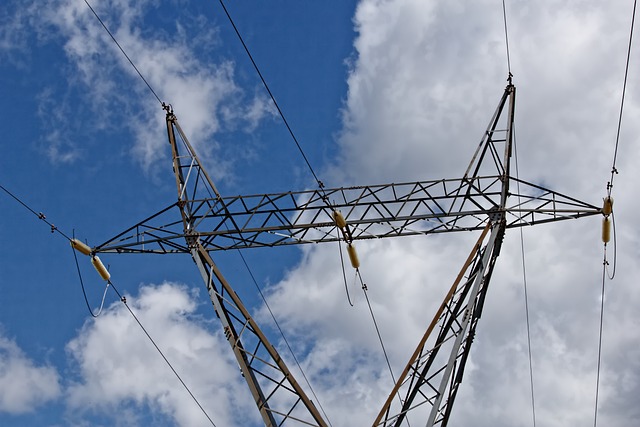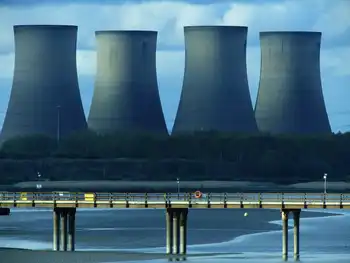Hydrologists meddle with water retention
By The Sault Star
Protective Relay Training - Basic
Our customized live online or in‑person group training can be delivered to your staff at your location.

- Live Online
- 12 hours Instructor-led
- Group Training Available
A water molecule will circulate in Lake Superior for more than 190 years before being channeled into the St. Mary’s; this “retention time” is the longest of any Great Lakes.
The amount of water entering the St. MaryÂ’s River has been regulated by Canada and the United States since 1918. The current international agreement endeavours to keep Lake SuperiorÂ’s level between 183 and183.5 metres above sea level, to best meet the 1909 Boundary Water Treaty goals of ensuring adequate water supply for domestic use, navigation and power generation.
But, in the end, industry, commerce and recreation hang in the balance of a system of lakes that is “way too big to be controlled,” said Roger Gauthier, a hydrologist with the Ann Arbor, Mich.,-based Great Lakes Commission, a binational research agency.
Last year, despite the efforts of hydrologists, Lake SuperiorÂ’s water disappeared at an alarming rate. In August 2007, Superior matched all-time lows, culminating a decade of low water. This trend has taken a toll on the Great Lakes shipping industry, which in 2007 transported more than 43 million tonnes of cargo. In the past 10 years, tonnage shipped on the Great Lakes has decreased, in part, because shallow water in ports and channels restricts the carrying capacity of larger lake- and ocean-going freighters.
“Reduced cargo means more trips and less revenue,” said Rod McLean, the marine manager for Thunder Bay, Ont.,-based ABM Marine Ltd.
“Increases in fuel costs hasn’t helped either.”
This year, Lake Superior has rebounded to approach its long-term average water level of about 183.4 metres above sea level.
McLean said more water in Lake Superior is good news for shippers on all of the Great Lakes, because Superior acts as the upper reservoir in the drainage basin and feeds water to lakes Huron, Michigan, Erie and Ontario.
Lake SuperiorÂ’s level is also governed by the amount of new water entering the lake from precipitation and runoff from its 200-odd inflowing rivers, and the amount of water leaving through the St. MaryÂ’s River.
Gauthier said more than 95 per cent of the lakeÂ’s outflow is diverted into Brookfield Renewable Power Inc. and Edison Sault ElectricÂ’s hydro facilities on the St. MaryÂ’s River, while the rest runs through a series of compensating gates before tumbling over the sandstone ledges of the St. MaryÂ’s rapids.
Hydrologists use monthly water levels and flow formulas to regulate the amount of water thatÂ’s allowed to pass through the turbines, said Gauthier. Last yearÂ’s low water levels meant local water power producers were forced to operate well below capacity, and consequently rates for electricity increased.
Under the Boundary Waters Treaty, BrookfieldÂ’s Clergue Generating Station in Sault Ste. Marie, Ont., receives the lionÂ’s share of the outflow of Lake Superior, meaning that low water levels have a greater impact on the pocketbooks of American consumers of electricity than on Canadians.
“We can’t get the low cost, hydroelectric energy when there’s a flow restriction on the St. Mary’s,” said Dan Dasho, general manager of the Cloverland Electric Cooperative, which distributes electricity across the Upper Peninsula of Michigan.
“This year, we’ve seen a substantial increase in the amount of flow on the St. Mary’s... over 20 per cent from last summer and fall. Consequently, our price of electricity has fallen.”
In recent years, science and speculation has blamed lowering Great Lakes water levels on changes to the St. Clair River, which flows for 64 kilometres between lakes Huron and St. Clair, and eventually into Lake Erie via the Detroit River. The St. Clair bottlenecks all of the water from lakes Superior, Michigan and Huron into an hourglass channel flowing downstream to the St. Lawrence River.
GauthierÂ’s research has shown that the amount of water leaving Lake Huron via the St. Clair River is increasing significantly due to channel erosion. Gauthier said depth sounding in 1859 indicated that the water at the St. ClairÂ’s mouth, near Sarnia, Ont., measured less than four metres.
Today, the same area has a depth of more than 18 metres.
According to studies funded by the Georgian Bay Association, a group representing 17,000 Lake Huron residents, this means about 9.5 billion litres of water leave Huron via the St. Clair River each day. The group claims that dredging is compounding the erosion problem.
“There’s no doubt that erosion on the St. Clair is having some sort of effect on water levels,” said Gauthier. “But dredging isn’t the smoking gun.”
GauthierÂ’s work is part of larger studies of the effects of erosion and flow regulation on the St. Clair and St. MaryÂ’s rivers funded by the International Joint Commission (IJC), a Canada-U.S. research agency focusing on Great Lakes science and policy.
The first IJC report is due out next spring. Gauthier said that current research — which includes studying the possibility of reinforcing river channels and reducing flows with underwater “speedbumps” — demonstrates a shift in hydrologists’ focus to water retention.
“What we’re seeing is a huge testament to the fact that the Great Lakes are still evolving,” said Gauthier. “If we want to have some stability, we need to find means of retaining water in the upper Great Lakes.”











